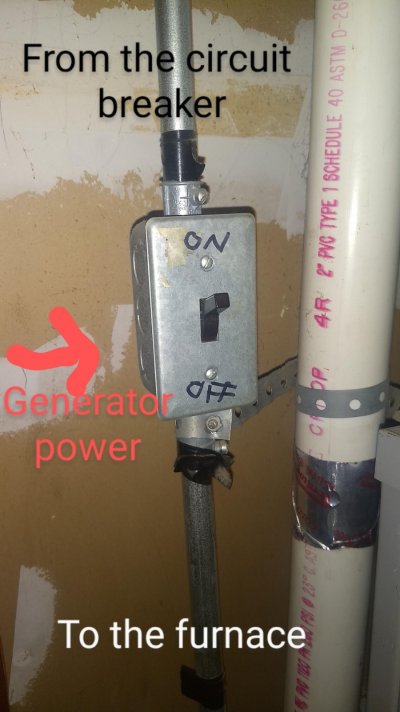teetee
Full time employment: Posting here.
- Joined
- Jul 11, 2019
- Messages
- 679
Here is a question that I can use some input.
I have a forced-air furnace that relies on 110v power for the fans to do their thing. Recently we had a power outage (nor'easter in New England area). This is the first year I start using a small portable gas inverter generator (WEN 56225i 2250W peak 1800W sustained) to keep the fridge and network equipment on during the outage.
I realized that if the power outage occurs when it's below 0F outside, things can get dicey (frozen pipes and frozen toes) so adding a receptacle to the furnace for the generator input seems to be a reasonable thing to do.
Here is the photo of the existing conduit goes to the furnace. The switch is not working half of the time so I am thinking to replace it as well. I am not looking for a transfer switch at the circuit breaker.
I have a forced-air furnace that relies on 110v power for the fans to do their thing. Recently we had a power outage (nor'easter in New England area). This is the first year I start using a small portable gas inverter generator (WEN 56225i 2250W peak 1800W sustained) to keep the fridge and network equipment on during the outage.
I realized that if the power outage occurs when it's below 0F outside, things can get dicey (frozen pipes and frozen toes) so adding a receptacle to the furnace for the generator input seems to be a reasonable thing to do.
Here is the photo of the existing conduit goes to the furnace. The switch is not working half of the time so I am thinking to replace it as well. I am not looking for a transfer switch at the circuit breaker.
Attachments
Last edited:


